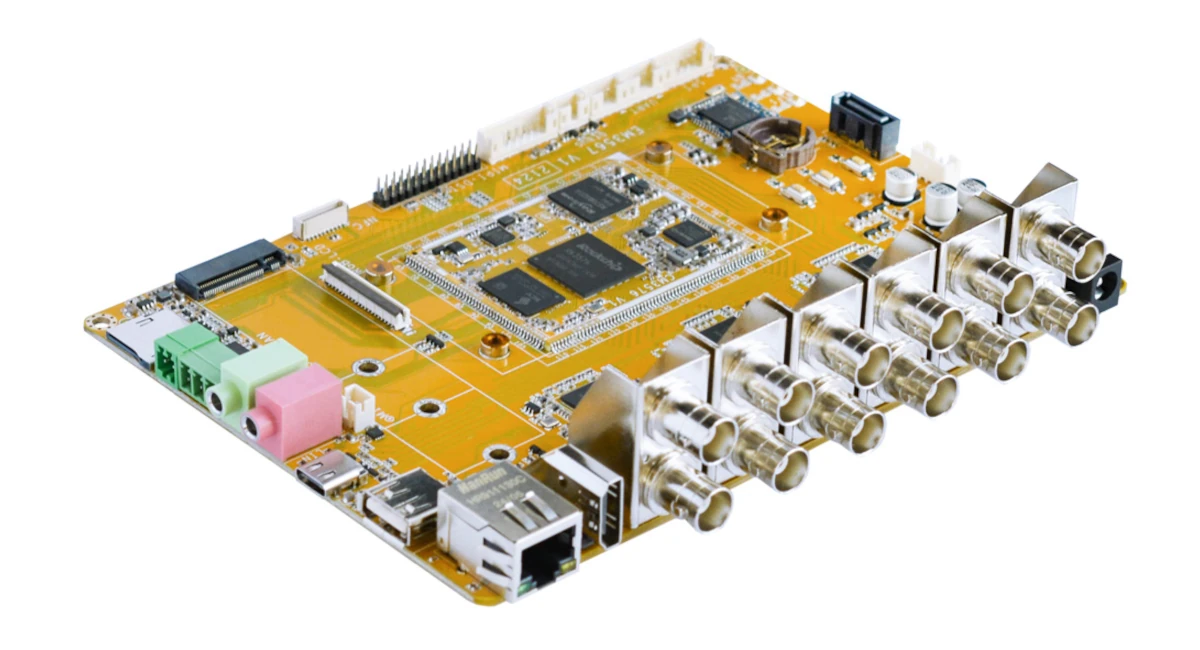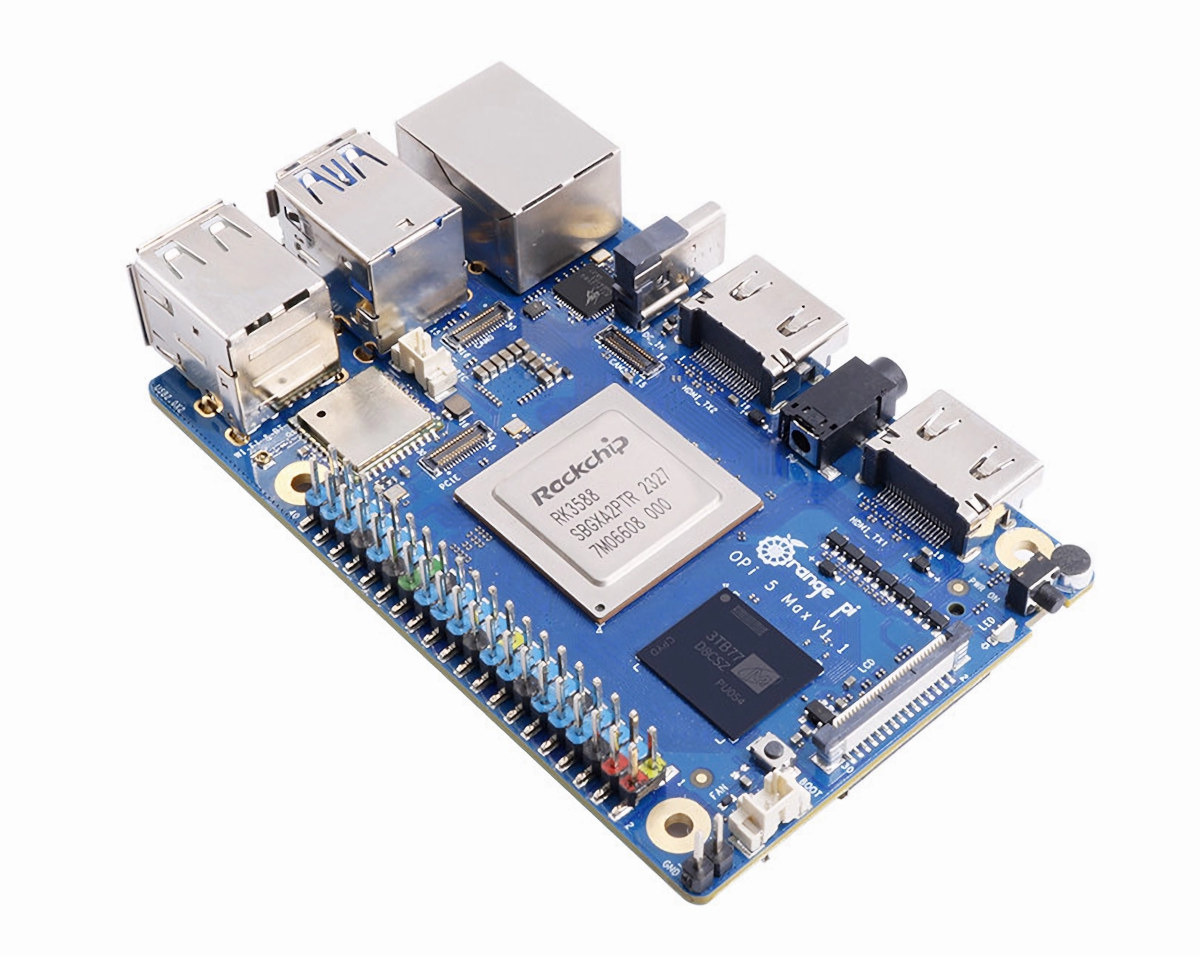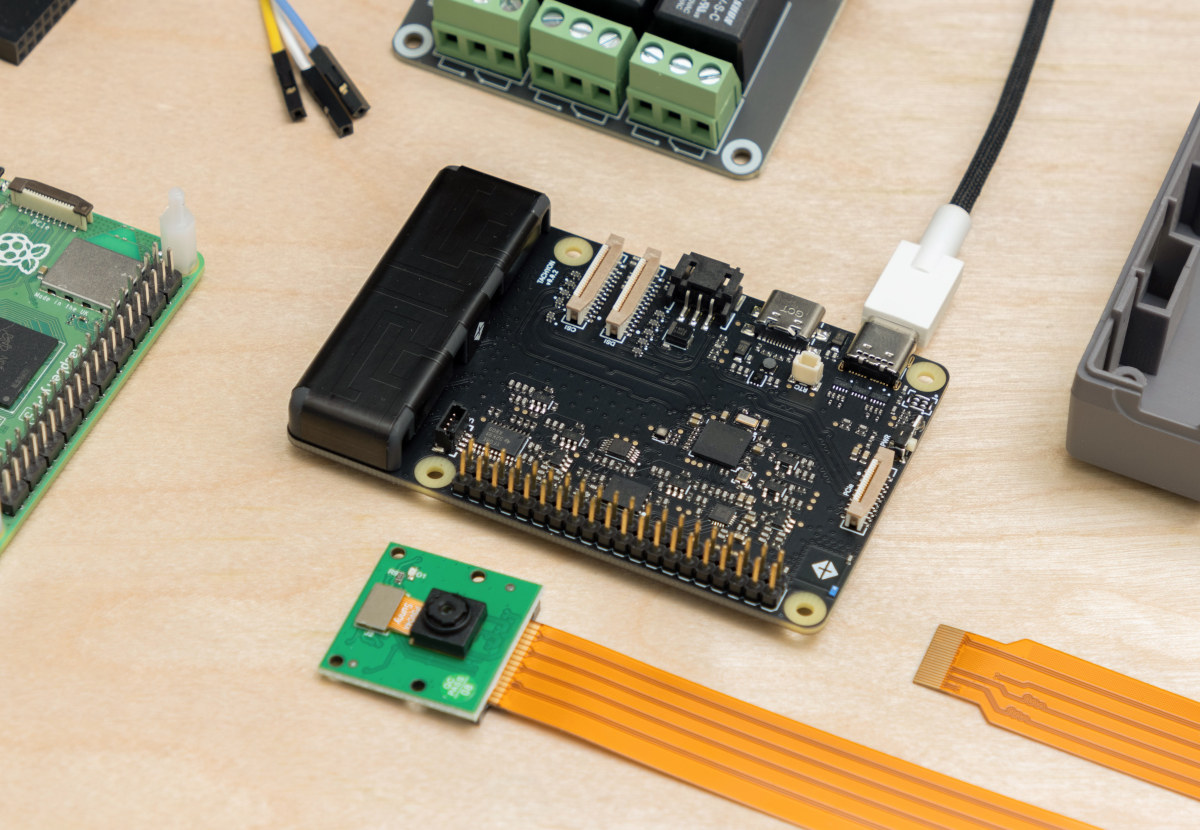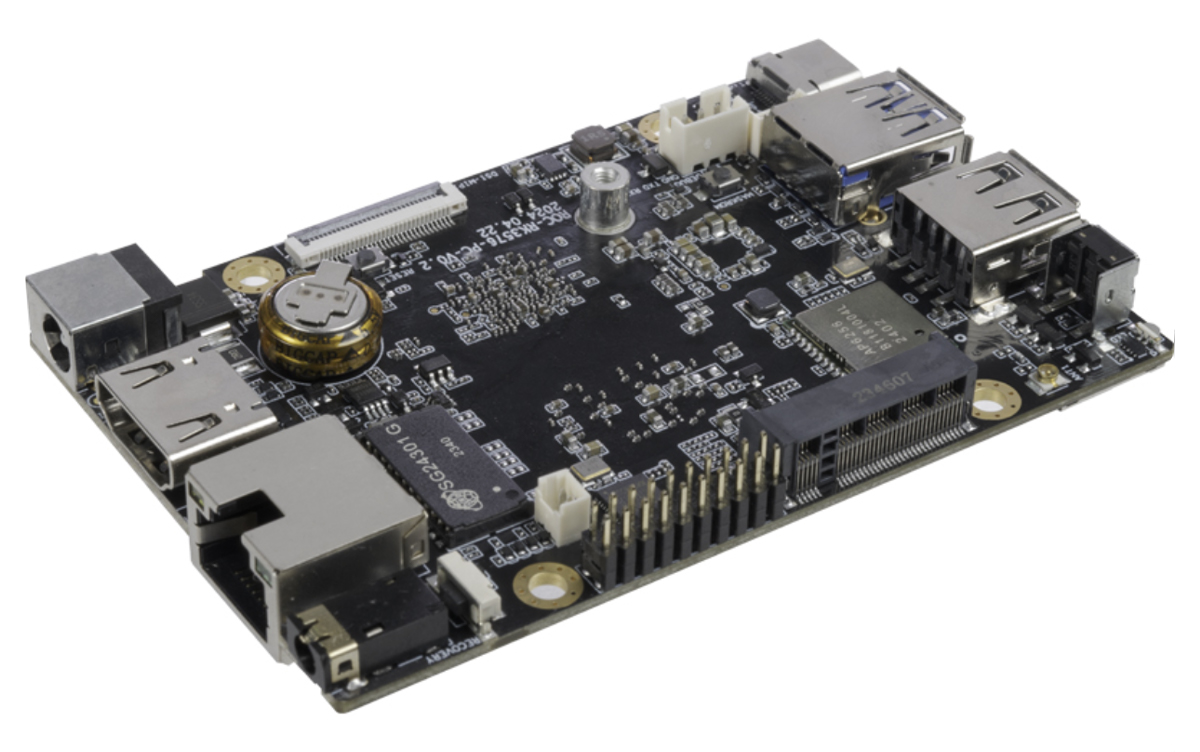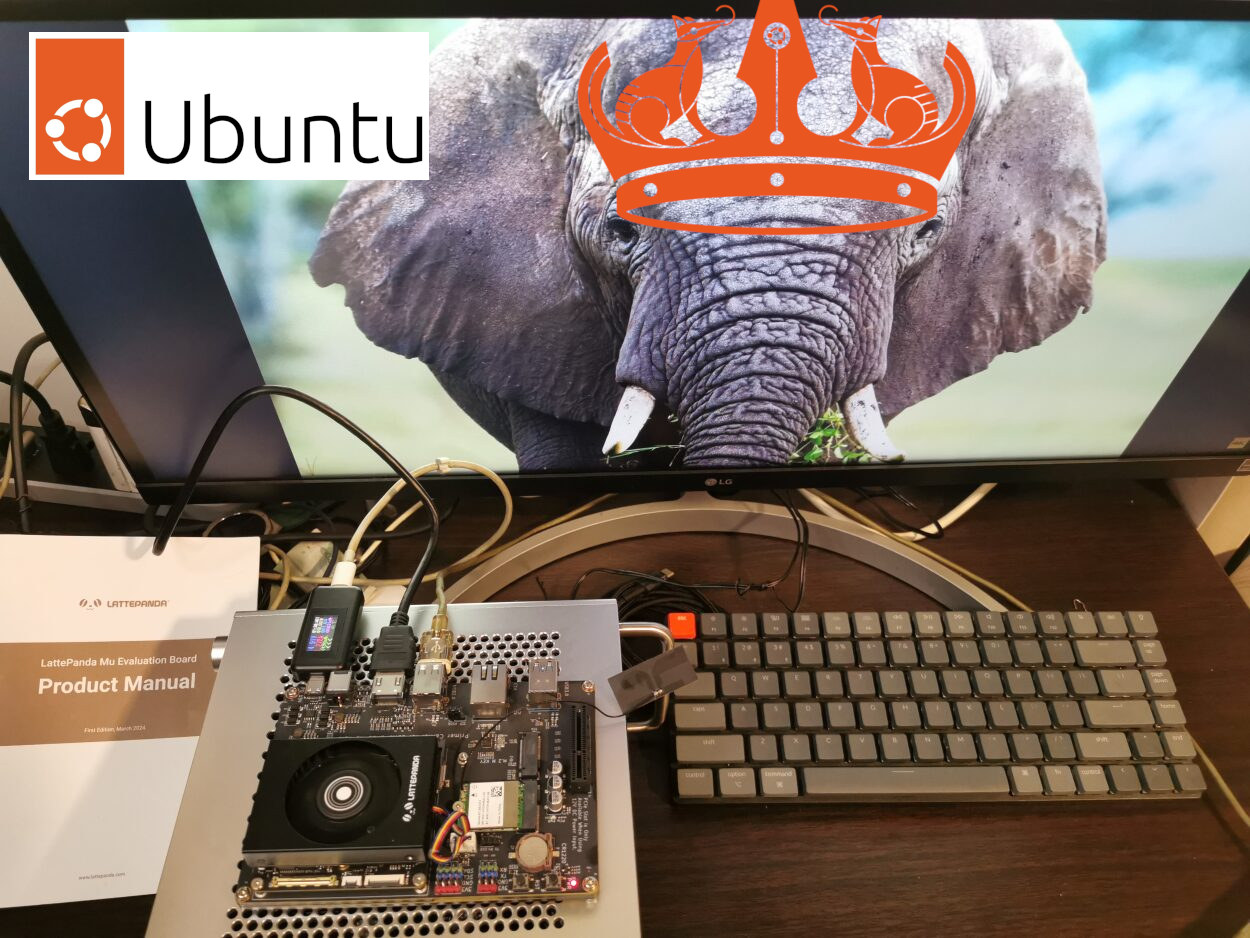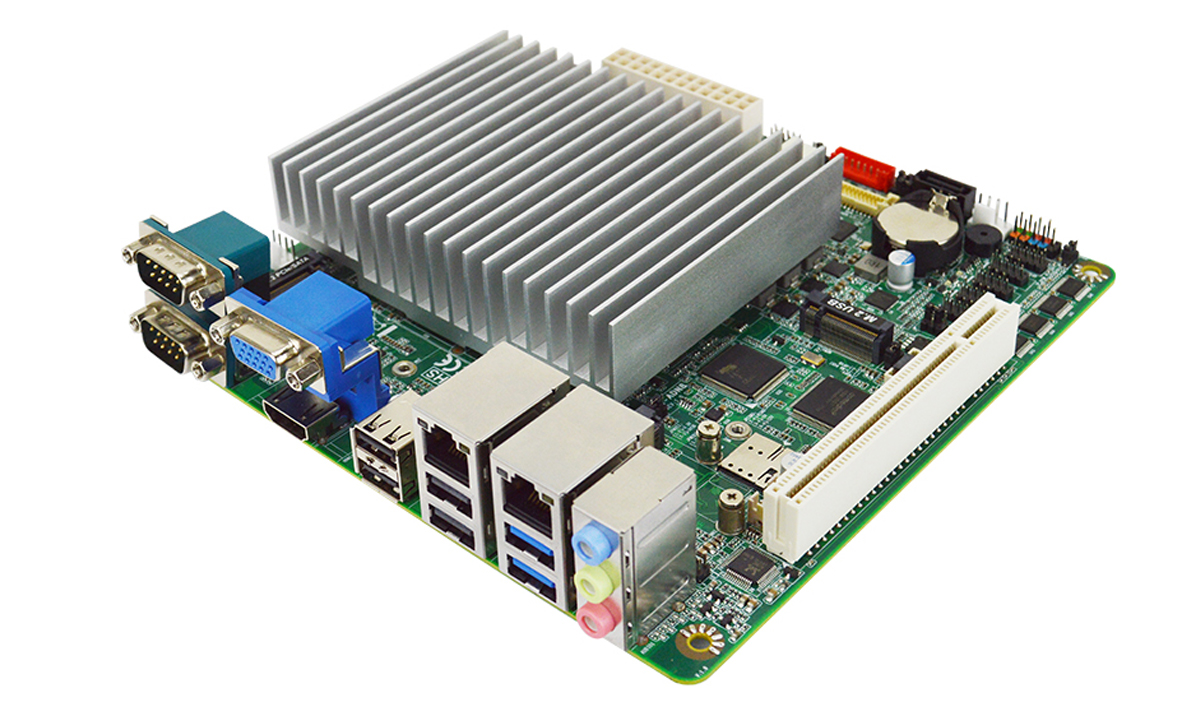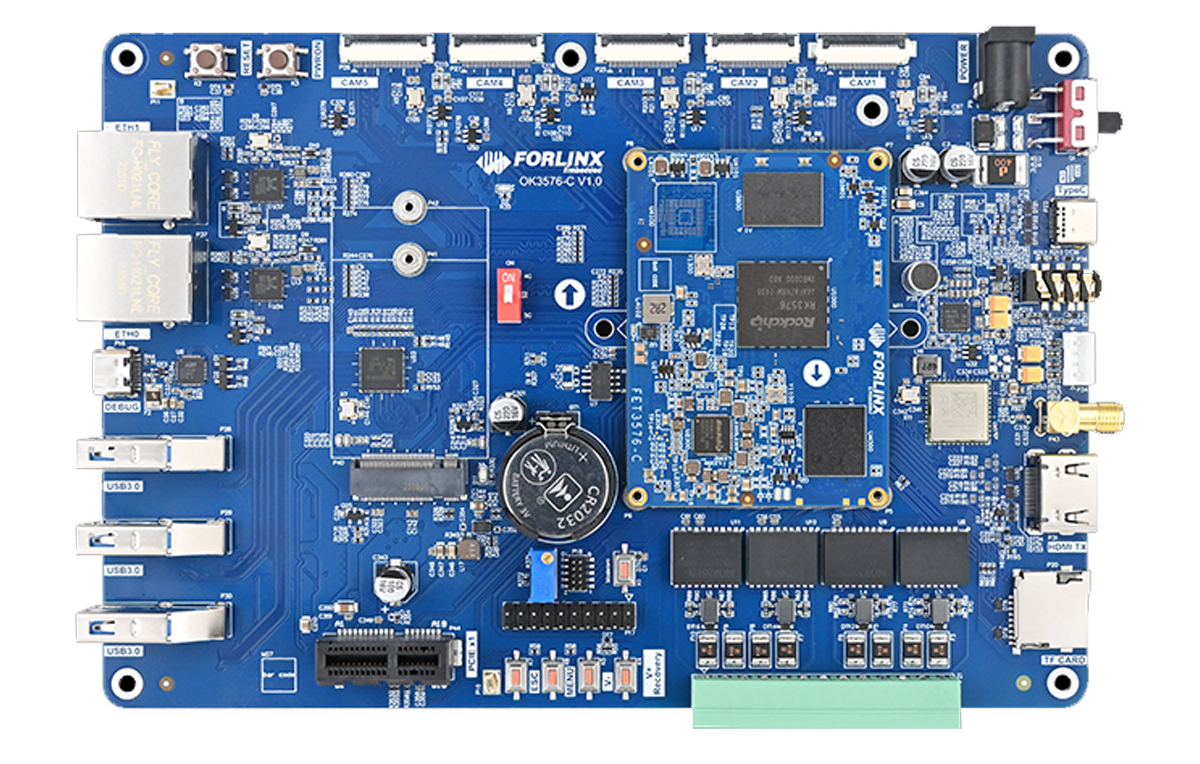Boardcon CM3576 is a system-on-module (SoM) Rockchip RK3576 with castellated holes that also powers the company’s EM3576 development board with 12 analog camera inputs among a range of other interfaces. We covered a few Rockchip RK3576 platforms in recent weeks including the Firefly ROC-RK3576-PC and Banana Pi BPI-M5 SBCs, and another system-on-module with the Forlinx FET3576-C with four 100-pin board-to-board connectors. The Boardcon CM3576 offers another option as a solderable SoM with castellated edges. Boardcon CM3576 SoM Specifications: SoC – Rockchip RK3576 CPU 4x Cortex-A72 cores at 2.3GHz, 4x Cortex-A53 cores at 2.2GHz Arm Cortex-M0 MCU at 400MHz GPU – ARM Mali-G52 MC3 GPU with support for OpenGL ES 1.1, 2.0, and 3.2, OpenCL up to 2.0, and Vulkan 1.1 NPU – 6 TOPS (INT8) AI accelerator with support for INT4/INT8/INT16/BF16/TF32 mixed operations. VPU Video Decoder – H.264, H.265, VP9, AV1, and AVS2 up to 8Kp30 or 4Kp120 Video Encoder – […]
Rockchip RK3588-powered Orange Pi 5 Max SBC features up to 16GB LPDDR5, 2.5GbE, onboard WiFi 6E and Bluetooth 5.3
Initially teased at the Orange Pi Developer Conference earlier this year, the Orange Pi 5 Max SBC powered by a Rockchip RK3588 SoC is now available on Amazon and Aliexpress for $95 and up with 8GB or 16GB LPDDR5, and support for eMMC flash modules or soldered on eMMC flash. A 4GB RAM version is also planned for $75. The Orange Pi 5 Max is basically a cost-down version of the Orange Pi 5 Plus with fewer interfaces (e.g. 1x 2.5GbE vs 2x 2.5GbE, no HDMI input, etc..), higher bandwidth LPDDR5 memory, onboard WiFi 6E and Bluetooth 5.3, and a smaller form factor between Pico-ITX and credit card size. Orange Pi 5 Max specifications: SoC – Rockchip RK3588 CPU – Octa-core processor with 4x Cortex-A76 cores @ up to 2.4 GHz, 4x Cortex-A55 cores @ up to 1.8 GHz Arm Mali-G610 MP4 GPU with support for OpenGL ES1.1/2.0/3.2, OpenCL 2.2, […]
Tachyon is a business card-sized SBC based on Qualcomm QCM6490 Arm AI SoC with 5G and WiFi 6 connectivity (Crowdfunding)
Particle Tachyon is a credit card-sized SBC for AIoT projects powered by a Qualcomm QCM6490 octa-core Cortex-A78/A55 SoC with 12 TOPS of AI performance, 4GB RAM, 64GB UFS storage, and support for 5G cellular and WiFi 6 connectivity. The Tachyon integrates MIPI DSI and CSI display/camera interfaces, two USB-C ports including one with DisplayPort Alt mode, and also leverages some Raspberry Pi 5’s hardware features with a 40-pin GPIO header for HAT expansion boards and the 20-pin PCIe FFC for PCIe add-ons. Tachyon specifications: SoC – Qualcomm QCM6490 CPU – Octa-core Kryo 670 with 1x Gold Plus core (Cortex-A78) @ 2.7 GHz, 3x Gold cores (Cortex-A78) @ 2.4 GHz, 4x Silver cores (Cortex-A55) @ up to 1.9 GHz GPU – Adreno 643L GPU @ 812 MHz with support for Open GL ES 3.2, Open CL 2.0, Vulkan 1.x, DX FL 12 DSP – Hexagon DSP with dual HVX and 4K […]
Firefly ROC-RK3576-PC low-profile Rockchip RK3576 SBC supports AI models like Gemma-2B, LlaMa2-7B, ChatGLM3-6B
Firefly ROC-RK3576-PC is a low-power, low-profile SBC built around the Rockchip RK3576 octa-core Cortex-A72/A53 SoC which we also find in the Forlinx FET3576-C, the Banana Pi BPI-M5, and Mekotronics R57 Mini PC. In terms of power and performance, this SoC falls in between the Rockchip RK3588 and RK3399 SoCs and can be used for AIoT applications thanks to its 6 TOPS NPU. Termed “mini computer” by Firefly this SBC supports up to 8GB LPDDR4/LPDDR4X memory and 256GB of eMMC storage. Additionally, it offers Gigabit Ethernet, WiFi 5, and Bluetooth 5.0 for connectivity. An M.2 2242 PCIe/SATA socket and microSD card can be used for storage, and the board also offers HDMI and MIPI DSI display interfaces, two MIPI CSI camera interfaces, a few USB ports, and a 40-pin GPIO header. Firefly ROC-RK3576-PC specifications SoC – Rockchip RK3576 CPU 4x Cortex-A72 cores at 2.2GHz, four Cortex-A53 cores at 1.8GHz Arm Cortex-M0 MCU at 400MHz GPU […]
LattePanda Mu Intel N100 SoM and carrier board review – Part 2: Ubuntu 24.04
We’ve already checked out the hardware for LattePanda Mu and tested it on Windows 11 using both the Lite Carrier Board and Full-Function Evaluation in the first part of the review. We’ve now had time to test the LattePanda Mu Intel N100 board with Ubuntu 24.04 to see how it performs in Linux with the following tests:
Initial system information
Benchmarks for CPU, disks, peripherals, and networking (GbE and WiFi)
Web and multimedia usage
Power consumption
Since LattePanda Mu is an x86 machine, we can create a boot disk from the Ubuntu 24.04 ISO as we would on a PC.
Jetway JMTX-ADN8 mini-ITX motherboard features Intel N97 CPU, dual GbE, three display interfaces
The Jetway JMTX-ADN8 is a mini-ITX motherboard built around an Intel N97 (Alder Lake-N) processor. The board supports up to 32GB DDR5 RAM via a single SO-DIMM slot and can drive up to three independent displays powered by Intel UHD graphics. Additionally, it offers dual GbE LAN, nine USB ports both USB3.2 Gen 1 and USB 2.0, and multiple storage and expansion options including M.2 (M-key, E-key, and B-key) and SATA-III. The motherboard also includes PCI expansion and supports Windows and Linux operating systems. In one of our last posts, we wrote about the Jetway JNUC-ADN1, another Intel N97-powered SBC, but in a smaller Next Unit of Computing (NUC) form factor. Other than that we have written about similar motherboards in mini-ITX from factors including Radxa ROCK 5 ITX, MW-100-NAS, and ASRock IMB-A8000 feel free to check those out if you are looking for mini-ITX motherboards. Jetway JMTX-ADN8 mini-ITX SBC […]
Forlinx FET3576-C Rockchip RK3576 SoM powers feature-rich OK3576-C board for AIoT applications
Forlinx FET3576-C SoM is a new System-on-Module built around the Rockchip RK3576 SoC which features four Arm Cortex-A72 and four Cortex-A53 cores made from a 22nm lithography process. The SoM is available with 2GB or 4GB of LPDDR4 RAM option and can be equipped with up to 32GB of eMMC storage. Additionally, it has 6 TOPS NPU power and supports standard peripherals like GbE Ethernet, Wifi, Bluetooth, LVDS, MIPI DSI, and much more. All these features make this device useful for IoT, edge computing, digital signage, and many other applications. The new FET3576-C SoM and its OK3576-C development board look very similar to the Forlinx FET3562J-C SoM and related board we covered earlier this month. But the main difference between the two is that the new one is built with the RK3576 SoC whereas the old one is built around the Rockchip RK3562(J) SoC. Previously we also saw that the […]
Adeept Robot HAT for Raspberry Pi is designed for DIY projects and educational needs
The Adeept Robot HAT V3.0 is a motor and sensor driver HAT that supports Raspberry Pi 5, Pi 4, and Pi 3 models. The board features a bunch of headers that give access to sensor and motor controllers including sixteen servo motor ports, a three-channel line tracking sensor, an ultrasonic sensor, IR receivers, WS2812 RGB LEDs, and more. Additionally, the board features an integrated 8.4V battery charger with a Type-C port for charging. All these features make it easy to build DIY robotics and smart car projects with this HAT. Previously we have written about similar educational robot kits including the Arduino Alvik educational robot, the XGO-Rider self-balancing robot, the Waveshare UGV Rover, SunFounder GalaxyRVR, and much more. Feel free to check that out if you are interested in those topics. Adeept Robot HAT V3.0 specifications HAT Name – Adeept Robot HAT V3.0 Host controller (one or the other) Raspberry Pi […]


